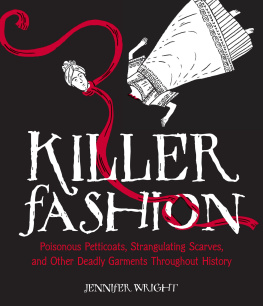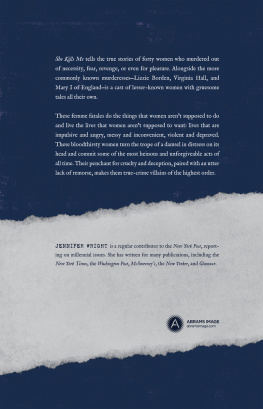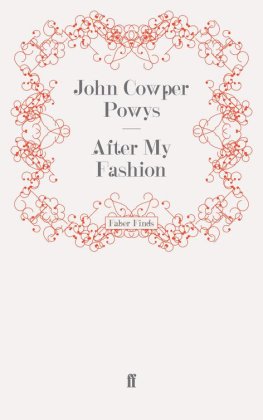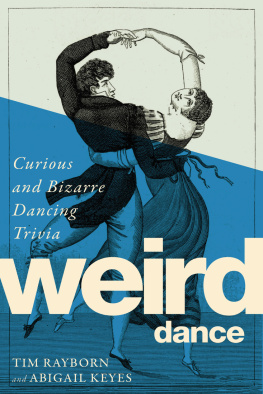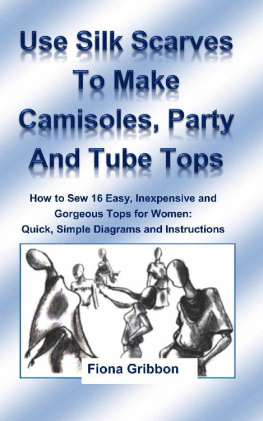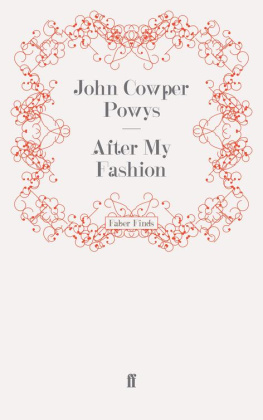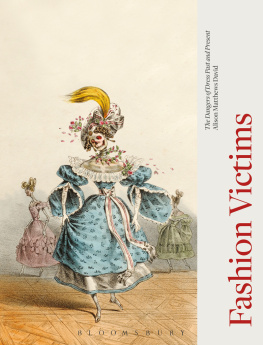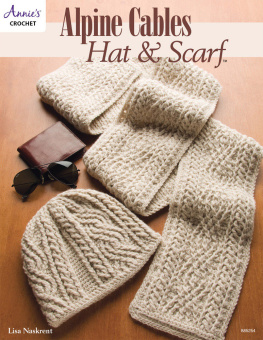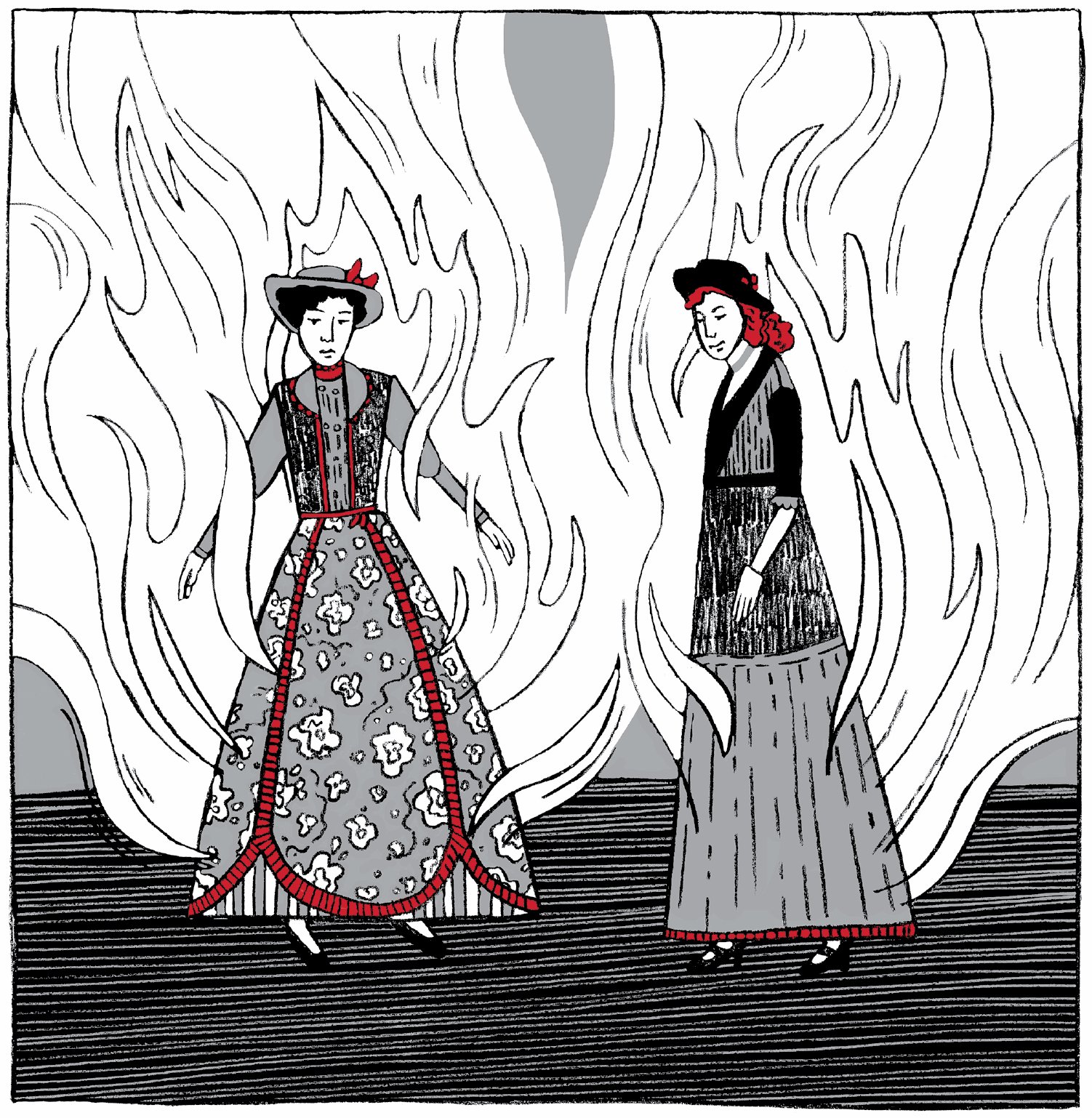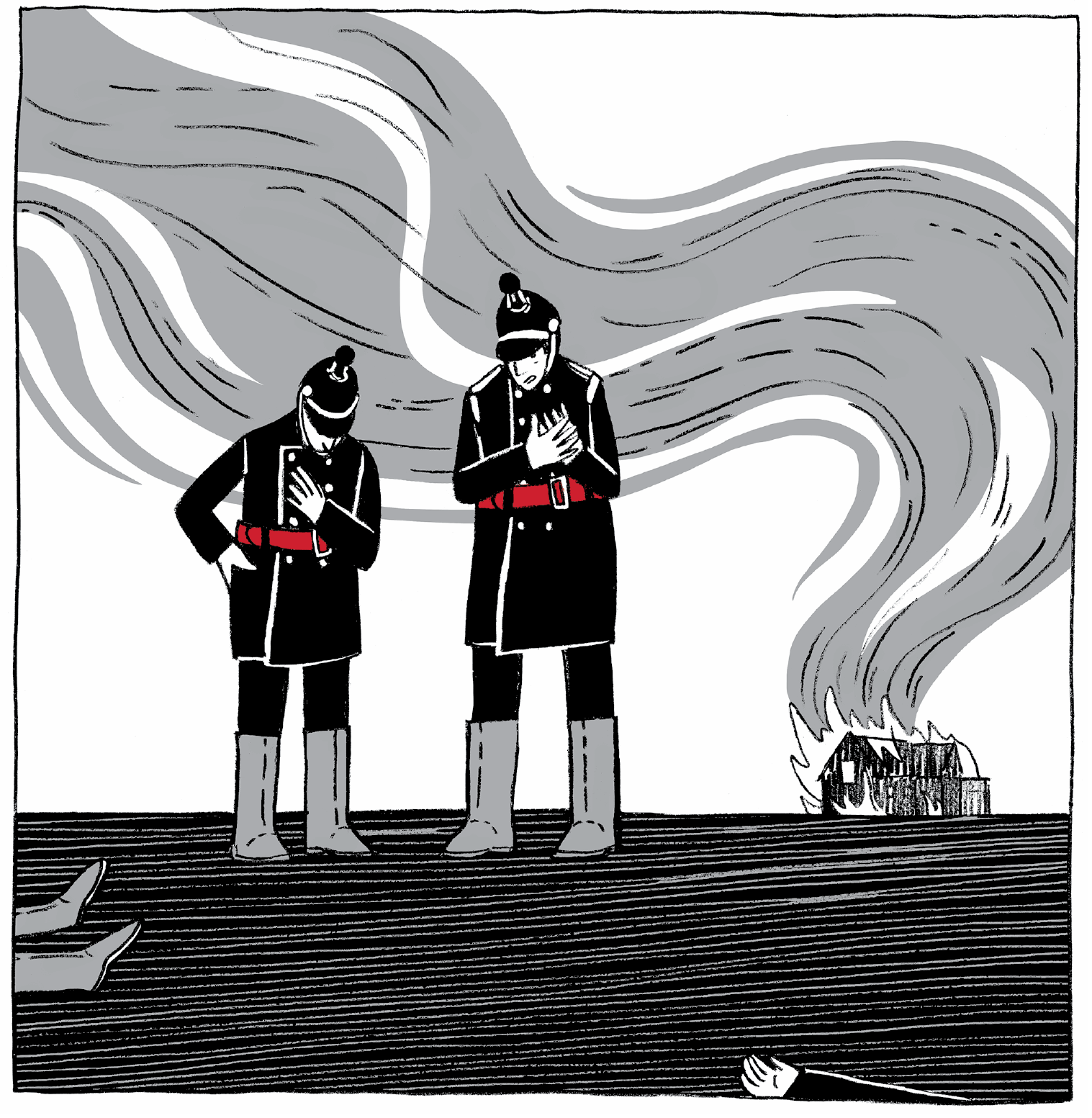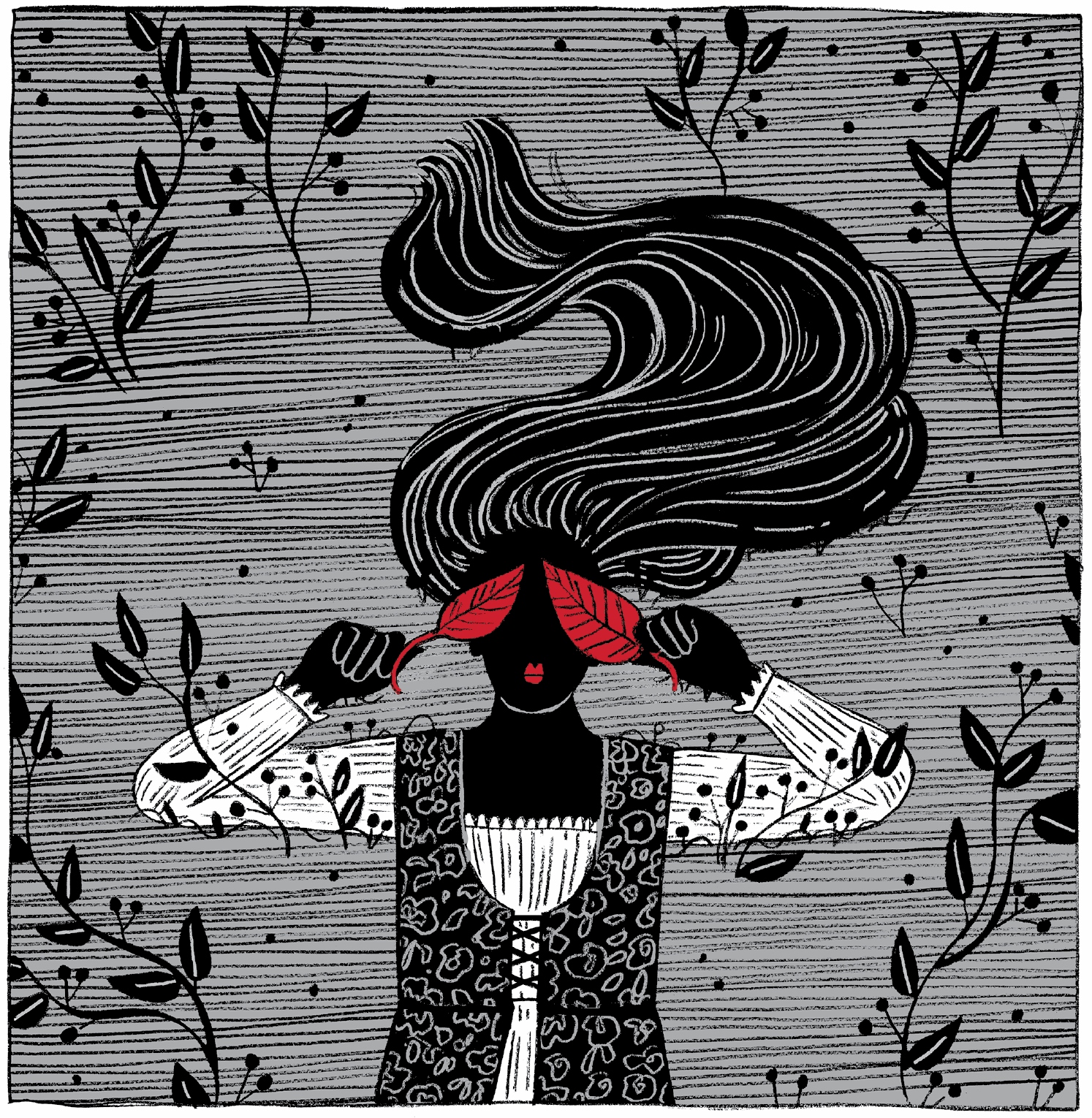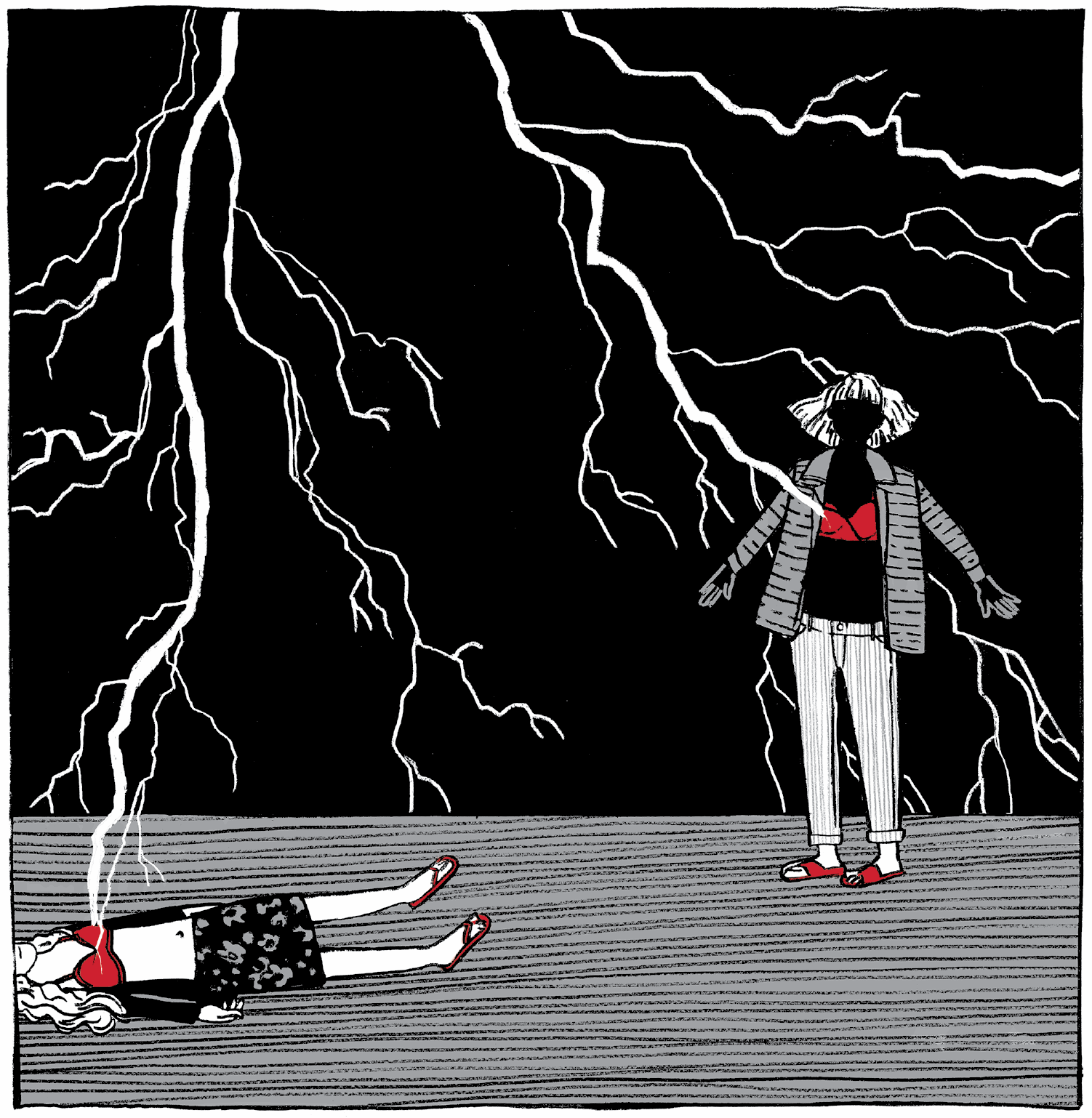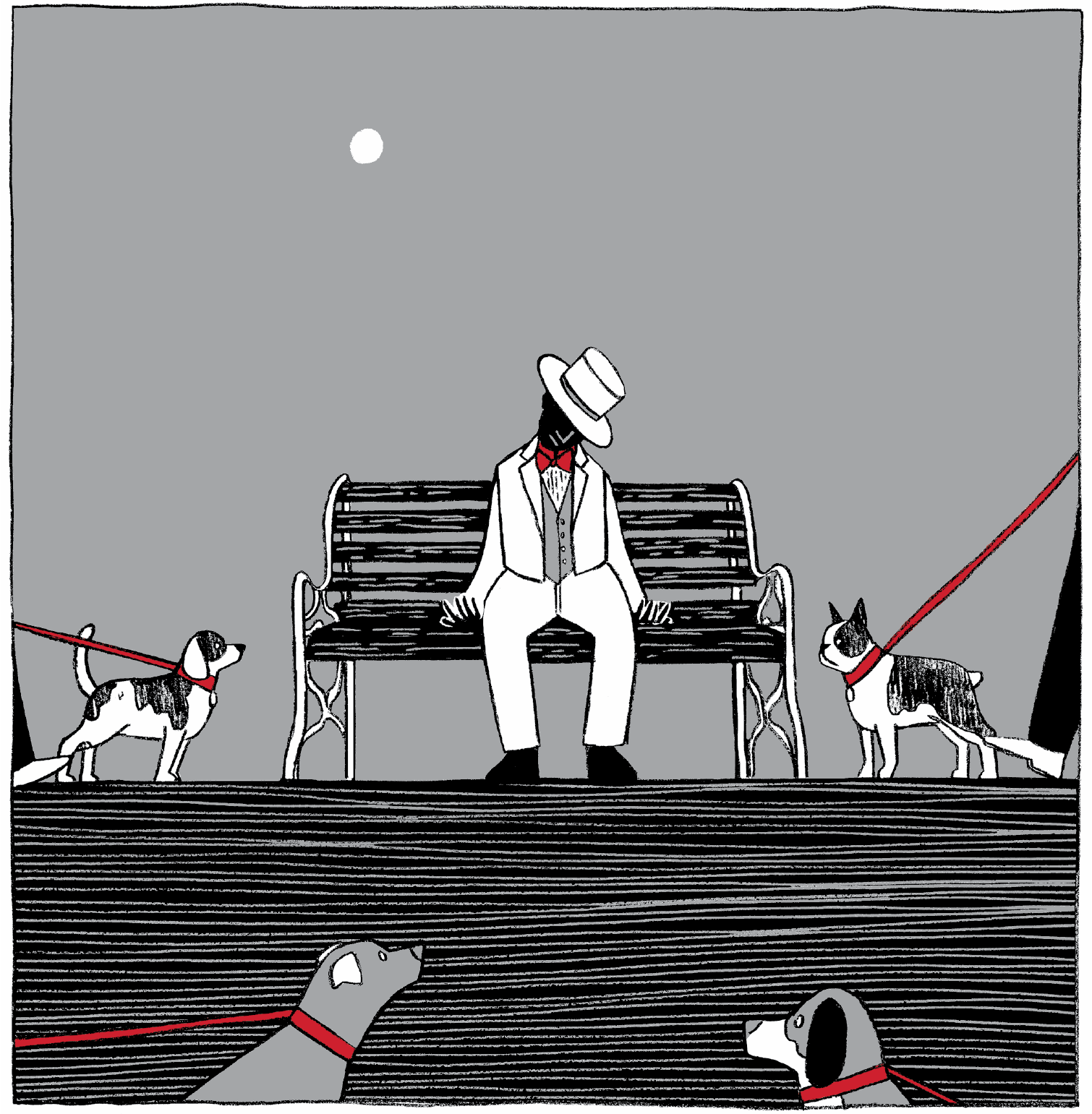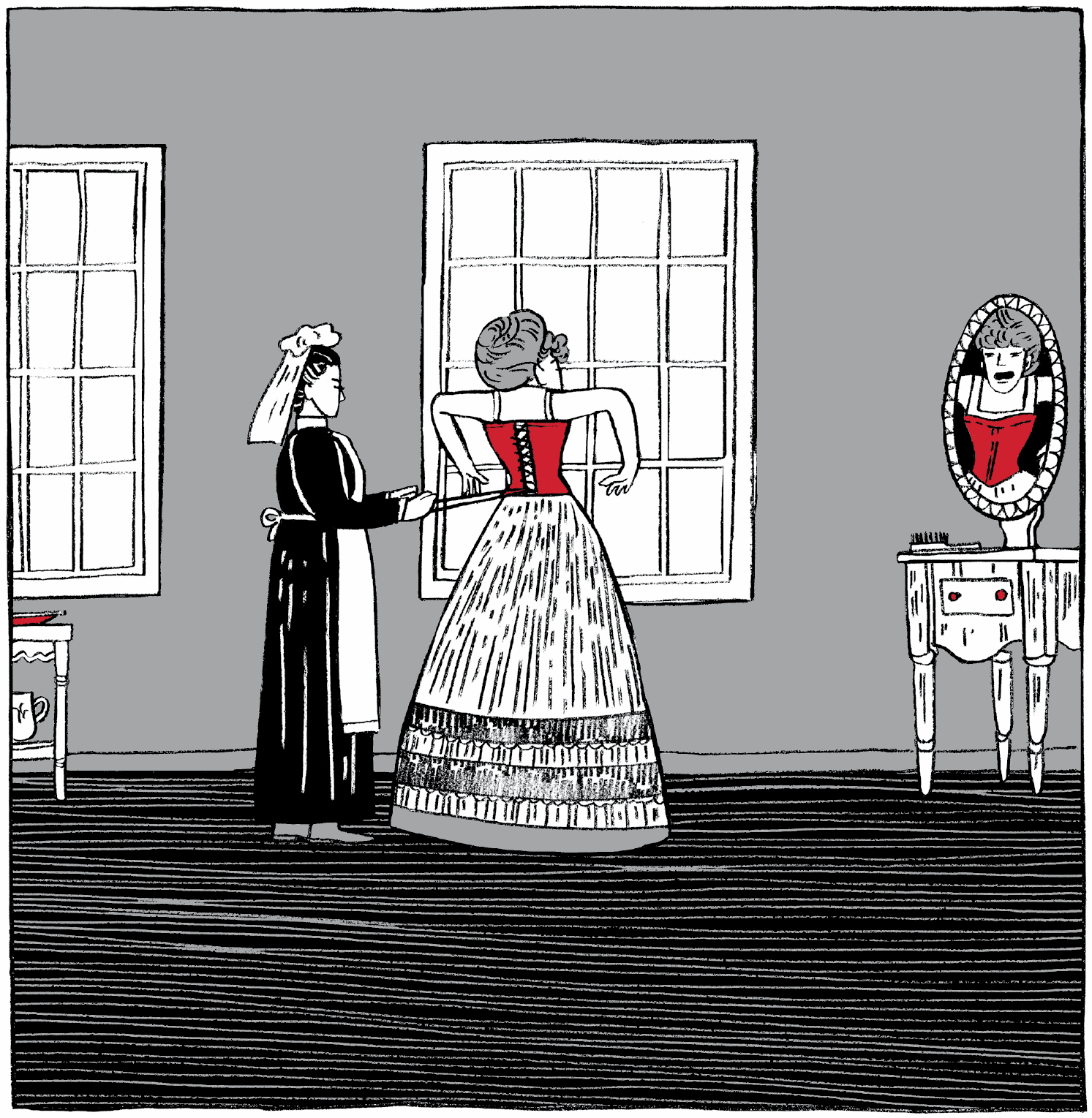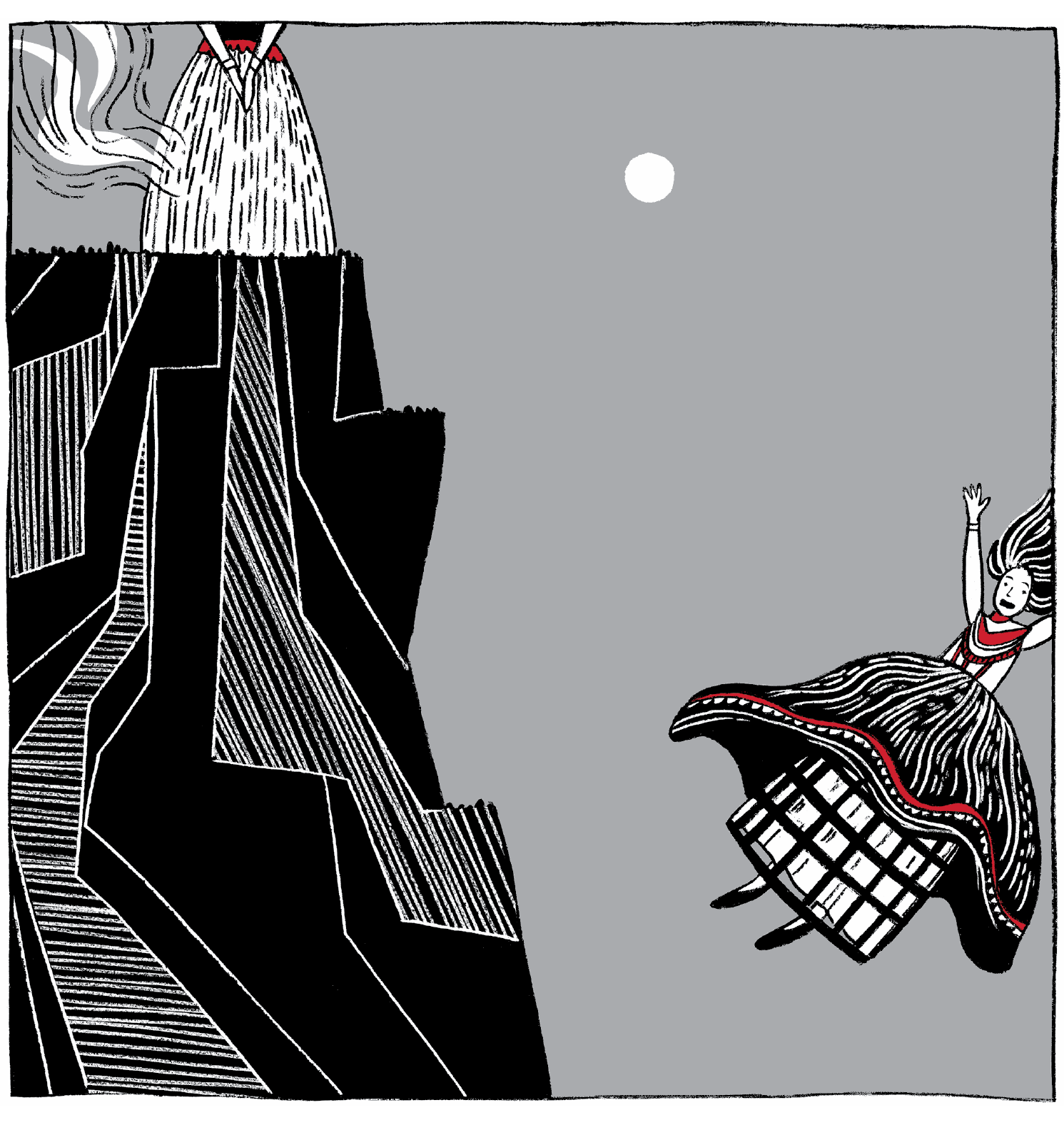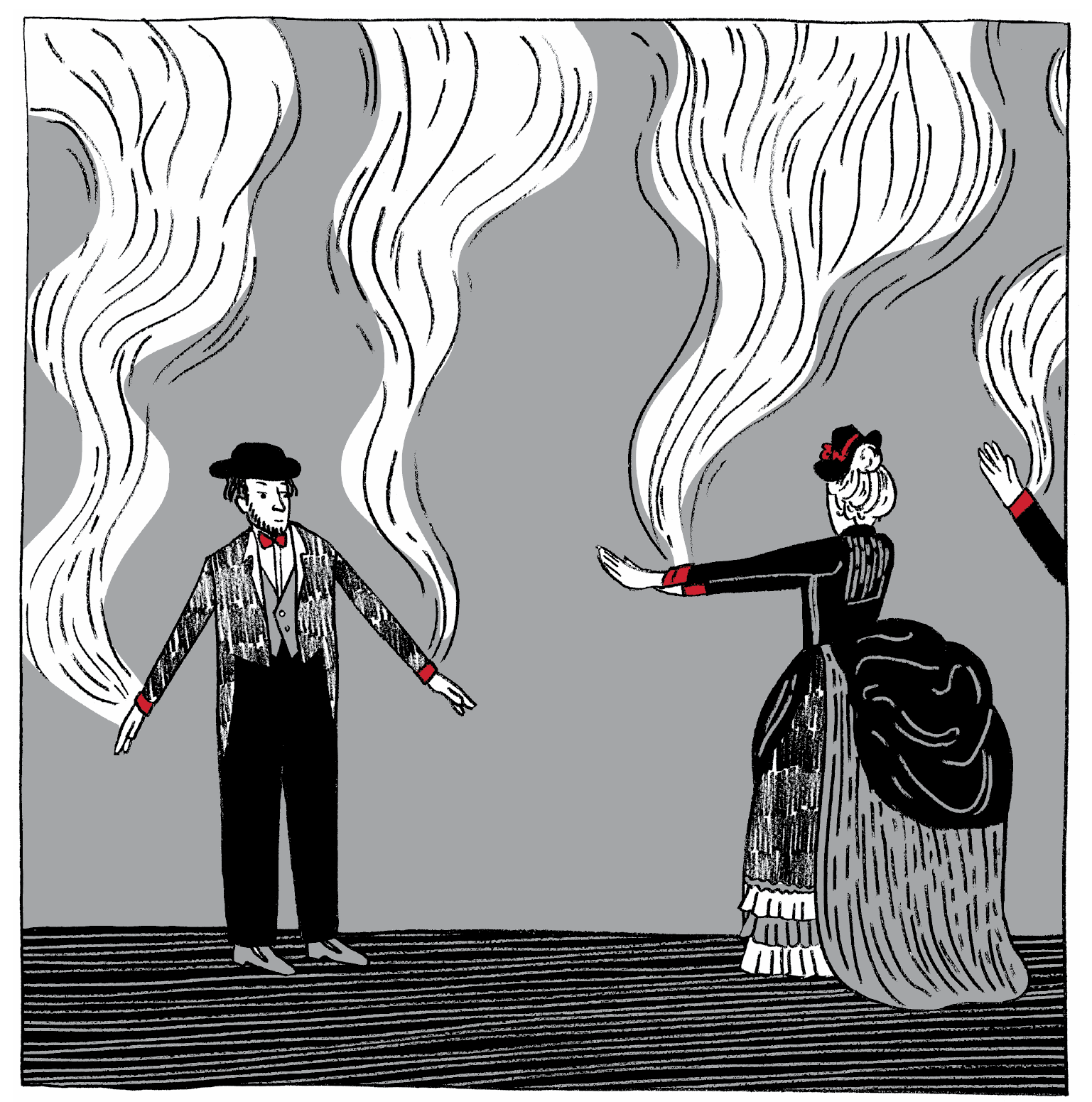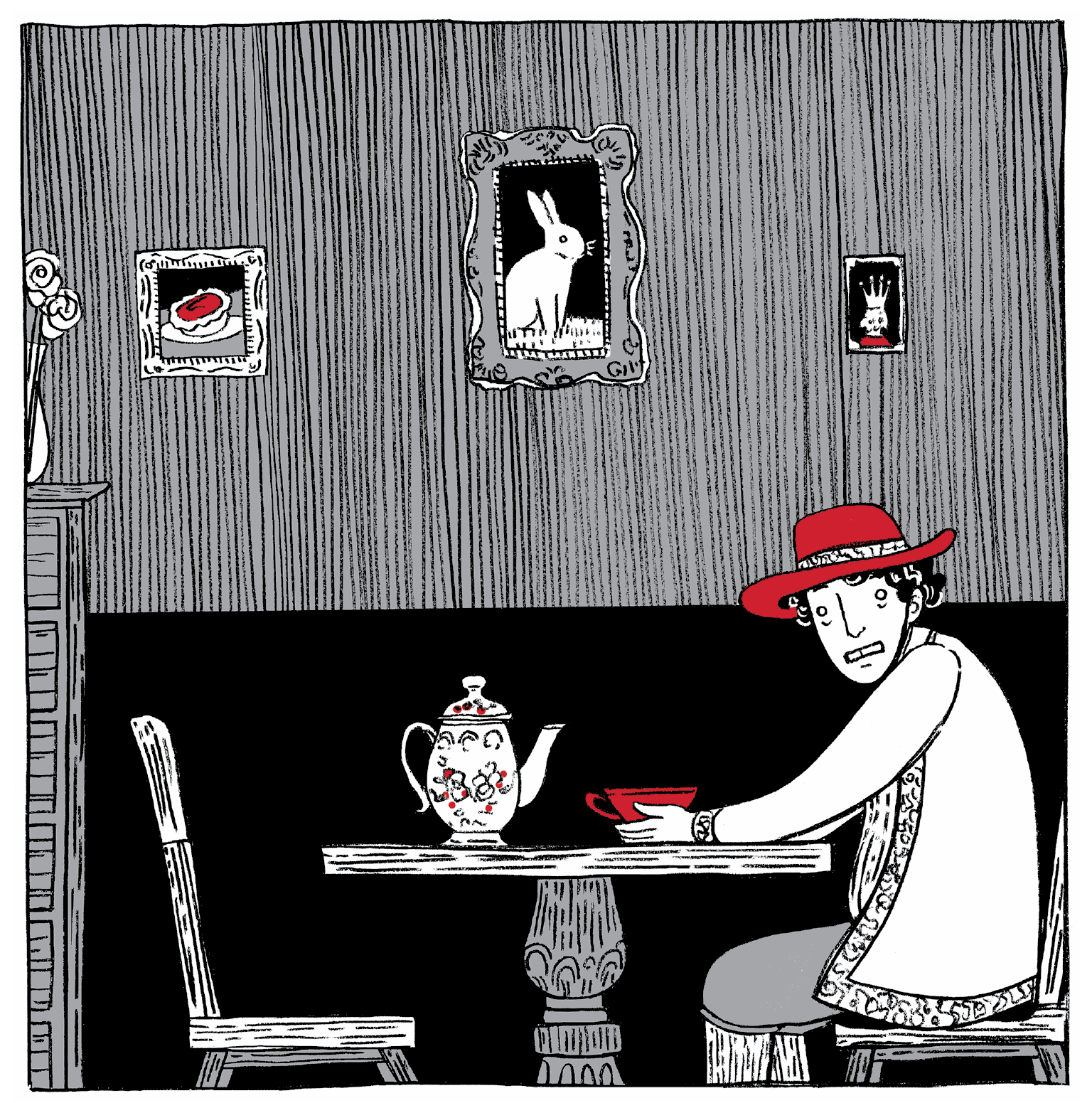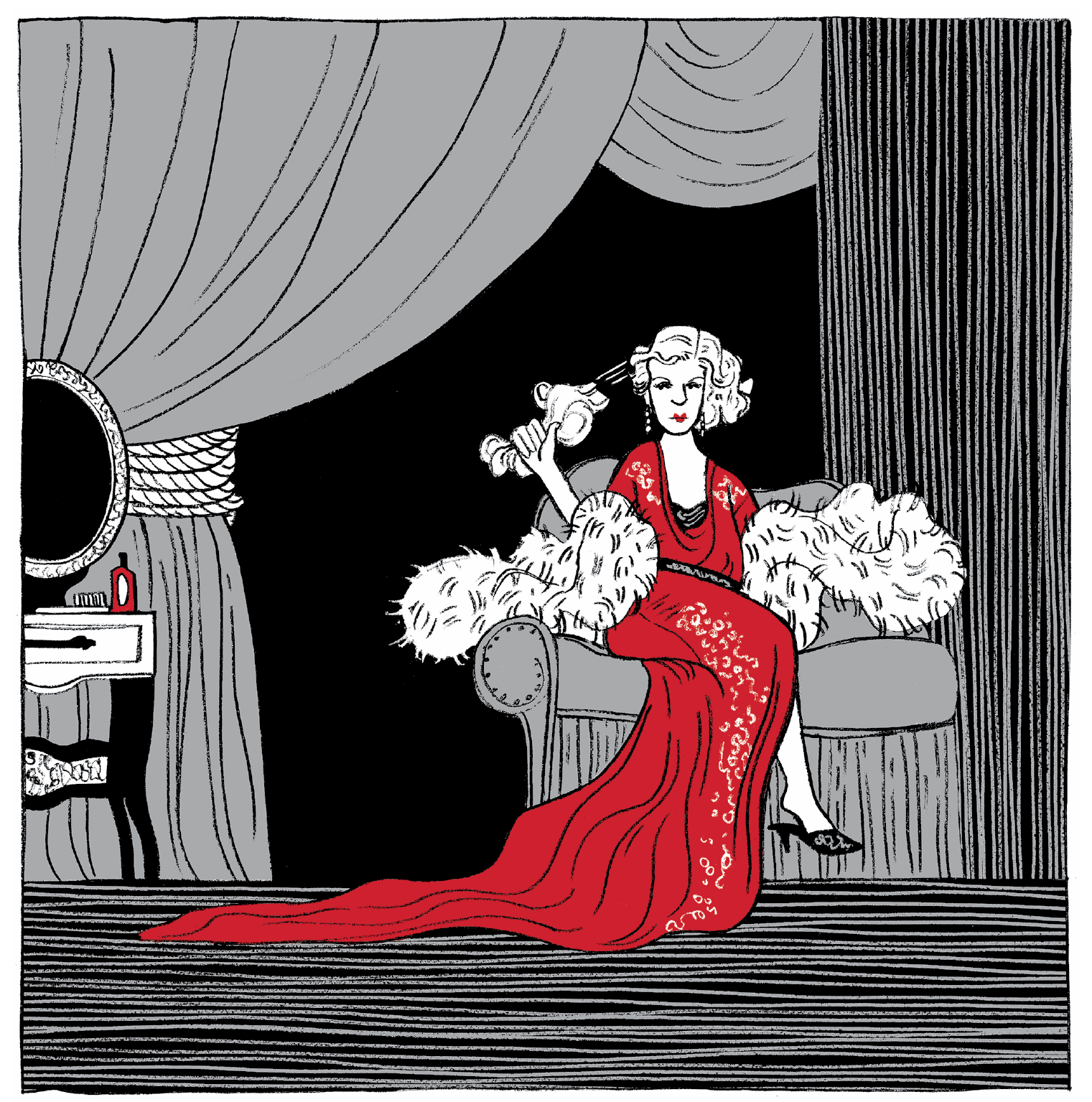Artificial Silk
I n 1932, the Archbishop of Canterbury rejoiced, One of the main agents in the taming of the East End has been artificial silk.
Yes, artificial silk was nice
for looking fine at half the price,
but if a candles flame you caught,
youd find it getting far too hot.
Asbestos
M any of the clothes responsible for killing people did so because they were so flammable that the briefest of contact with any flame might transform them from garments into bonfires. But not cloth made of asbestos! Ancient Greeks and Romans admired the fire-resistant mystical property of this material. Marco Polo encountered it in Mongolia in 1280 and marveled at the fabric that could not burn.
Asbestos cloth could not catch fire,
making it seem like fine attire.
But no one knew that fibers clung,
forever in their poisoned lungs.
Belladonna
B elladonna is just a prettier name for the perennial herb plant deadly nightshade. The name means beautiful lady in Italian Of course, thats before patients slipped into comas, and their big eyes shut forever.
While belladonna made big eyes,
taking it was far less than wise.
For if it didnt make you blind,
it might instead just rot your mind.
Bras
C arrie Fisher said that for her obituary, I want it reported that I drowned in moonlight, strangled by my own bra.
A simple piece of metal wire
holds a ladys breasts up higher.
But they can be in for quite a jolt,
if it attracts a lightning bolt.
Collars
D ont worry: The collar on your average shirt is not going to kill you. The insanely stiff starched shirt collars that dandies wore around the turn of the twentieth century, however, might. Known as a Vatermrder , or father killer in German,
London gents spent hard-earned dollars
to buy starched detachble collars.
But through the night, if necks might swell,
by morning theyd be stiffs as well.
Corsets
S imply wearing a corset isnt so bad. Its not necessarily fun, or comfortable, but it wont kill you. Its the ultratight lacing of a corset worn regularly that will cause your demise. Unfortunately, in the 1890s, women were striving to achieve the smallest waists possible. That required lacing their heavily boned corsets to what some claim was a ridiculously slimming degree. An eighteen-inch waist was considered ideal, but some girls boasted about being able to tighten their corsets ( or, rather, having their strong maids tighten them ) to attain sixteen- or even, in very rare cases, thirteen-inch waists. One such woman in 1859 died because the excessive tightness of her corset caused her ribs to pierce her liver. Likely, no one found those poor, bent-over women particularly alluring, regardless of the waspishness of their waists.
Corsets were considered a must
to cinch the waist and flatter the bust.
Victorian women held their breath,
and, stylishly, were squeezed to death.
Crinolines
A t the height of Crinolinmania in the 1860s, four thousand crinolines the cage-like undergarments that created fashionably full skirts were produced a day in London.
Crinoline skirts were all the rage
during the Victorian age.
But those who werent burned up crisp
might blow aloft and fly off cliffs.
Cuffs
A lexander Parkes invented the first man-made plastic in 1885. His creation, which he dubbed Parkesine, was thin, moldable, and easy to clean. People used it to make all manner of objects from billiard balls to brooches. They didnt last long; much though people wanted to avoid laundering their cuffs, they wanted to keep their hands more.
Plastic cuffs were cute and spiffy,
quick to clean up in a jiffy.
Adornments caught onlookers gaze
til wearers went up in a blaze.
F elt
B eing a mad hatter was not nearly as fun as Alice in Wonderland makes it seem. The mercury poisoning that made hat makers crazy did not, in reality, make them fun dining companions. It did give them uncontrollable twitches and tremors. It also resulted in emotional changes, mental decline, kidney trouble, respiratory failure, hatmakers may have continued to be poisoned by mercury.
Hatters who made caps for the head
did not know they might soon be dead.
The mercury that stretched brims wide
would rot the brain that was inside.
F ontange
T he fontange hairdo began as an accident and contributed to many more. It originated when Louis XIVs mistress, the Duchesse de Fontanges, fell off her horse while they were hunting. She was unharmed, but her hairdo was destroyed. So she took off a garter and tied her hair up atop her head.
Atop their heads ladies would wear
ribbons and baubles everywhere.
But those ornaments they affixed
turned all their heads to candle wicks.
Hair Dye
T he 1920s Blonde Bombshell Jean Harlow used to say that, if not for her hair, Hollywood wouldnt know Im alive. The star-worthy shade of blonde didnt last for long. Harlows hair began falling out by the time she was twenty-four. And though the dye created a stunningly stylish effect, its thought to have taken a tremendous toll on Harlow, who was already in poor health. Harlow died at twenty-six from kidney failure due to a build-up of toxins in her system, which was likely linked to her frequent use of the noxious hair dye.
Blonde Jean Harlow had much more fun
than, truly, almost anyone.
But the head that made people stare
would soon be done with all its care.
High Heels
H igh heels were always supposed to be deadly; they just werent supposed to kill the person wearing them. Originally worn by male equestrians in fifteenth-century Persia, the shoes heels were intended to make it easier for riders to stand up in their stirrups and shoot arrows at their enemies while galloping on horseback.

